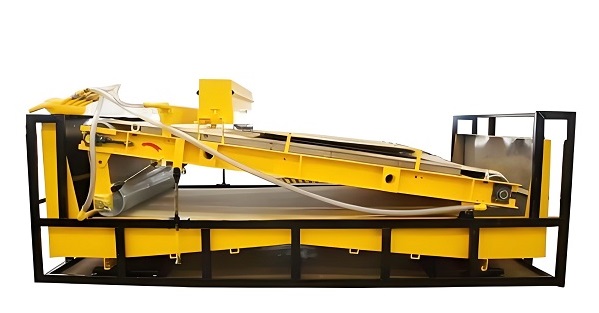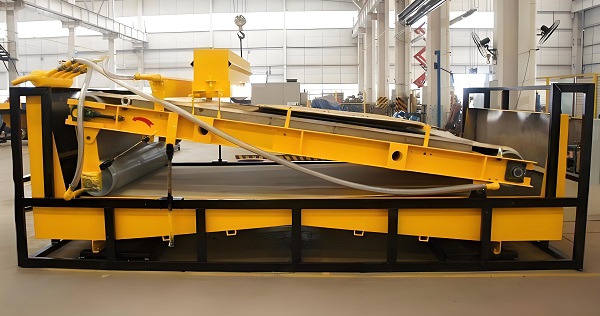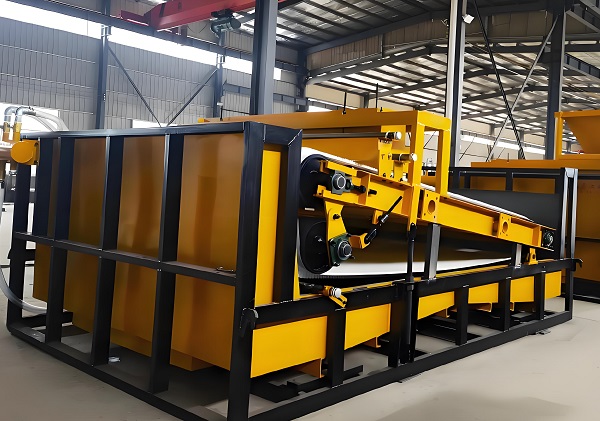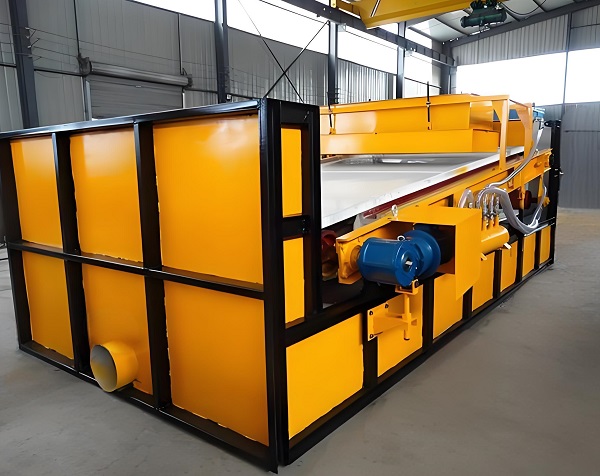Magnetic separator is an important equipment widely used in industrial production. Its main function is to effectively separate magnetic substances from non-magnetic substances by using the magnetic difference of different substances. The following is a detailed introduction to the magnetic separator, and the word count is controlled within 2000 words:
A. Basic principle of magnetic separator

Magnetic Separator
The basic principle of magnetic separator is to use the magnetic field to exert force on the substance to separate substances with different magnetic permeabilities. In the magnetic separation process, magnetic force is the main force for capturing magnetic particles, while the combined force of all mechanical forces opposite to it (including gravity, centrifugal force, inertia force and fluid dynamic resistance, etc.) constitutes the competitive force. When the magnetic force on the magnetic particles is greater than the competitive force, they will be attracted by the magnetic field and separated; otherwise, they will remain in the non-magnetic substance. This principle enables the magnetic separator to effectively separate magnetic substances from the mixture.
B. Composition of magnetic separator
The magnetic separator is mainly composed of three parts: magnet system, feeding system and discharging system.
1. Magnet system: The magnet system is the core component of the magnetic separator, which generates a magnetic field through a strong electromagnetic field or permanent magnet. This magnetic field is the key to separating magnetic materials during magnetic separation. The design of the magnet system and the strength of the magnetic field directly affect the separation efficiency and accuracy of the magnetic separator.
2. Feeding system: The feeding system usually uses a conveyor belt or a vibrating feeder to transport the raw materials into the gap between the magnets. During this process, the raw materials are evenly dispersed in the magnetic field for better magnetic separation.
3. Discharging system: The discharging system usually collects the sorted magnetic or non-magnetic materials manually or automatically. After being processed by the magnetic separator, these materials can be collected separately and used in subsequent production or processing.
C. Types of magnetic separators
Magnetic separators can be divided into many types according to the magnetic field strength, working principle and application scenarios. The following are some common types of magnetic separators:

Magnetic Separator
1. Drum magnetic separator: Drum magnetic separator is one of the most common types of magnetic separators. It separates magnetic and non-magnetic materials through a rotating drum. The surface of the drum is usually covered with magnetic materials. When the drum rotates, the magnetic materials will be adsorbed on the surface of the drum and separated.
2. Cross-belt magnetic separator: A cross-belt magnetic separator uses two parallel conveyor belts, one of which is covered with magnetic material. When the mixture passes between the two conveyor belts, the magnetic material is adsorbed on the magnetic conveyor belt and separated.
3. Roller magnetic separator: The working principle of the roller magnetic separator is similar to that of the drum magnetic separator, but it uses a roller-shaped magnet. This type of magnetic separator is usually used to process materials with smaller particle sizes.
4. High gradient magnetic separator (HGMS): A high gradient magnetic separator uses a high gradient magnetic field to separate fine magnetic particles. This type of magnetic separator is usually used to process materials with low mineral content or where high-precision separation is required.
5. High intensity magnetic separator (HIMS): A high intensity magnetic separator has a stronger magnetic field strength and can separate materials with stronger magnetism. This type of magnetic separator is usually used to process materials containing highly magnetic materials.
6. Low intensity magnetic separator (LIMS): A low intensity magnetic separator is suitable for separating weakly magnetic materials. The magnetic field strength of this magnetic separator is low, but it is sufficient to separate weakly magnetic substances from the mixture.
D. Working process of magnetic separator
The working process of magnetic separator usually includes the following steps:

Magnetic Separator
1. Raw material input: The mixture to be separated is input into the magnetic separator through the feeding system. In this process, the mixture is evenly dispersed in the magnetic field.
2. Magnetic field effect: Under the action of the magnetic field, the magnetic particles are adsorbed on the surface of the magnet or the magnetic pole by the magnetic force. Non-magnetic particles are not affected by the magnetic field and continue to remain in the mixture or are discharged with the fluid.
3. Separation and collection: As the magnet rotates or moves, the magnetic particles adsorbed on the surface of the magnet will be brought to the discharge system and collected. Non-magnetic particles are collected or discharged through other channels.
4. Subsequent processing: The collected magnetic particles and non-magnetic particles can be processed or used separately. For example, magnetic particles can be used in metal recovery, ore refining and other fields; non-magnetic particles can be used in building materials, chemical raw materials and other fields.
E. Application scenarios of magnetic separators
Magnetic separators have a wide range of application scenarios, which are mainly reflected in the following aspects:
1. Mining field: In mining, magnetic separators are widely used in the selection and purification of ores. For example, in the beneficiation process of iron ore, magnetic separators can effectively separate magnetic iron minerals (such as magnetite) from other non-magnetic minerals (such as quartz, feldspar, etc.) in iron ore, thereby improving the grade and recovery rate of iron ore. In addition, magnetic separators are also widely used in the selection of manganese ore, ilmenite, wolframite and other ores.
2. Ceramic industry: In the ceramic production process, magnetic separators are used to remove iron impurities in porcelain mud. Iron impurities affect the appearance and performance of ceramic products. These impurities can be effectively removed by magnetic separators, and the quality and whiteness of ceramic products can be improved.
3. Chemical industry: In the chemical industry, magnetic separators are used to remove impurities and purify materials. Ferromagnetic impurities in materials can be removed by magnetic separators, and the purity and quality of products can be improved. This is of great significance for the production and application of chemical products.
4. Food industry: In the food industry, magnetic separators also play an important role. For example, in the processing of food raw materials such as flour and starch, magnetic separators can remove ferromagnetic impurities to ensure the safety and hygiene of food. In addition, in the production process of beverages such as juice and beer, magnetic separators can also be used to remove magnetic particles and impurities.
5. Resource recycling: Magnetic separators are also widely used in the field of resource recycling. Valuable magnetic substances can be recovered from waste materials through the processing of magnetic separators to achieve resource reuse and conservation. For example, in the recycling process of scrap cars, electronic products and other items, magnetic separators can be used to separate metal parts and non-metal parts.

Magnetic Separator
F. Development trend of magnetic separators
With the advancement of science and technology and the development of industry, magnetic separators are also constantly improving and innovating. The future magnetic separators will pay more attention to high efficiency, energy saving and environmental protection. For example, by optimizing the design of the magnet system and increasing the magnetic field strength, the separation efficiency and accuracy of the magnetic separator can be improved; by adopting advanced automation control technology and intelligent monitoring systems, remote control and fault diagnosis of the magnetic separator can be achieved; by adopting environmentally friendly materials and energy-saving technologies, the energy consumption and emissions of the magnetic separator can be reduced.
PS: As an important industrial equipment, the magnetic separator has a wide range of application scenarios and important application value in many fields such as mining, ceramics, chemicals, food, and resource recycling. With the continuous advancement and innovation of technology, magnetic separators will play a more important role in future industrial development.
Save Time! Get A Detailed Quotation Quickly.
